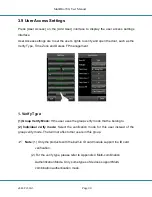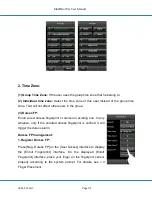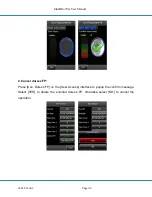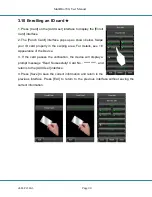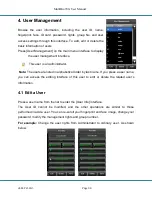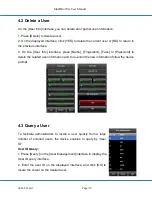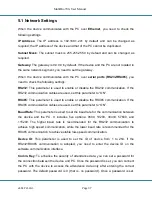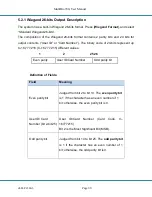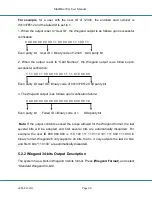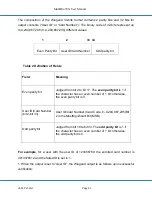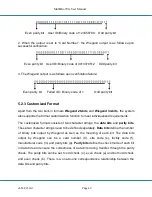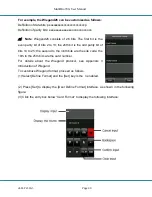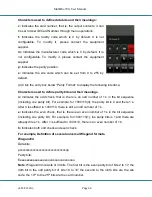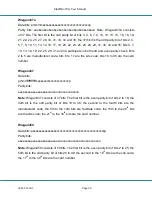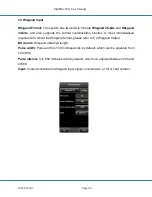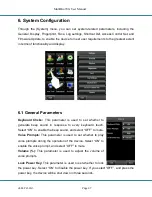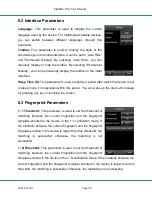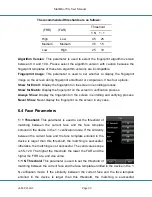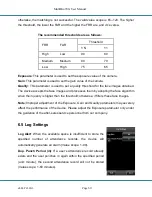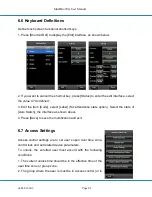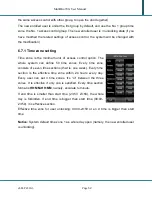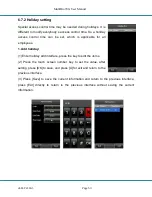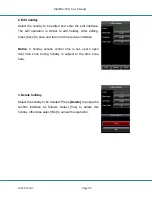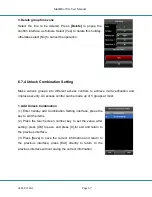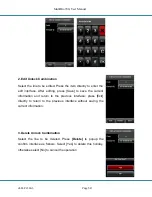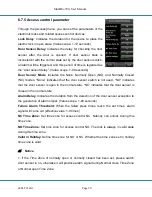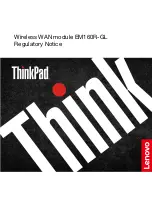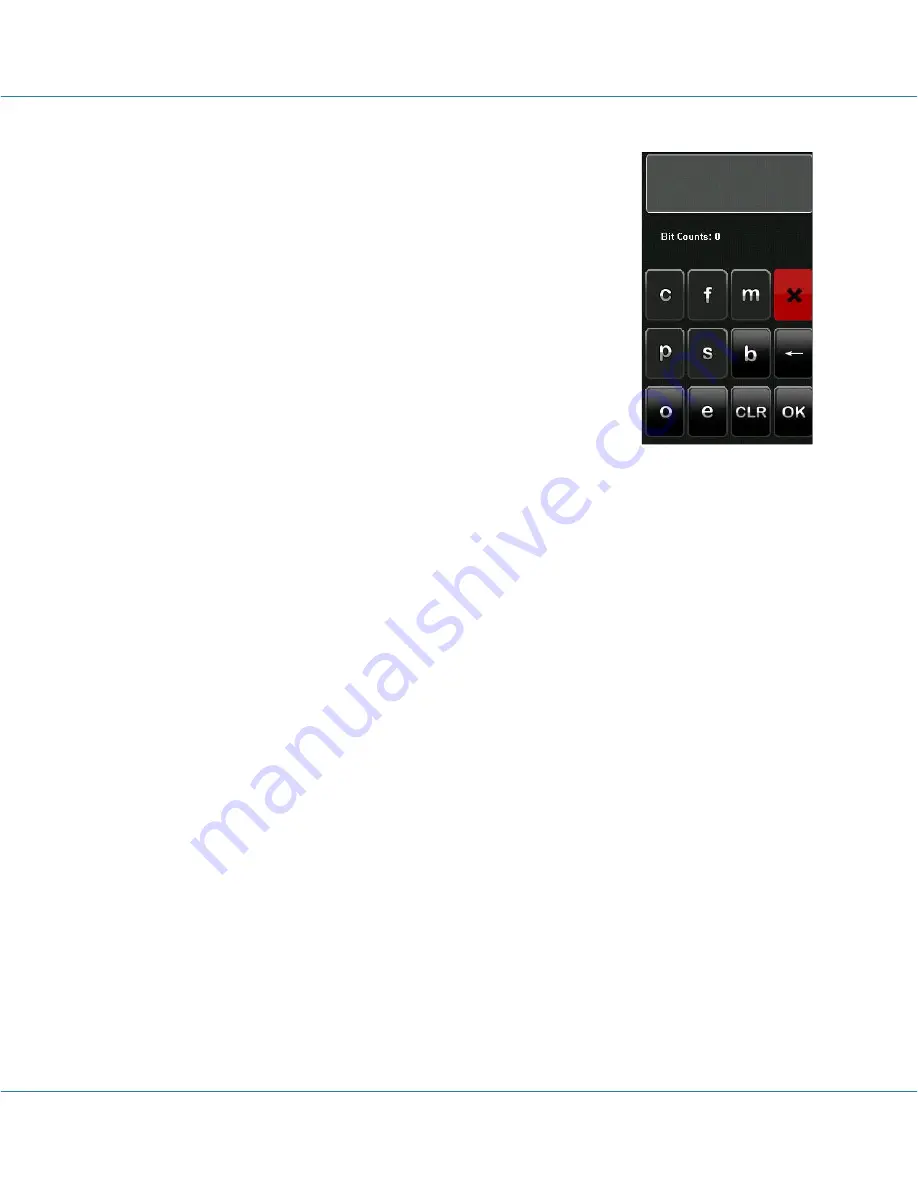
MultiBio700- User Manual
eSSL Pvt. Ltd.
Page 44
Characters used to define data bits and their meanings:
c:
Indicates the card number, that is, the output contents, it can
be set to User ID/Card Number through menu operations.
f:
Indicates the facility code which is 0 by default. It is not
configurable. To modify it, please contact the equipment
supplier.
m:
Indicates the manufacturer code which is 0 by default. It is
not configurable. To modify it, please contact the equipment
supplier.
p:
Indicates the parity position.
s:
Indicates the site code which can be set from 0 to 255 by
default.
(4) Click the ent
ry box below “Parity Format” to display the following interface:
Characters used to define parity bits and their meanings
:
o:
Indicates the odd check, that is, there is an odd number of 1’s in the bit sequence
(including one parity bit). For example, for 1000110(0), the parity
bit is 0 and there 1’s.
After 0 is suffixed to 1000110, there is still an odd number of 1’s.
e:
Indicates the even check, that is, there is an even number of 1’s in the bit sequence
(including one parity bit). For example, for 1000110(1), the parity bits is 1 and there are
already
three 1’s. After 1 is suffixed to 1000110, there is an even number of 1’s.
b:
Indicates both odd check and even check.
For example, Definition of several universal Wiegand formats.
Wiegand34
Data bits:
pccccccccccccccccccccccccccccccccp
Parity bits:
Eeeeeeeeeeeeeeeeeooooooooooooooooo
Note
: Wiegand34 consists of 34 bits. The first bit is the even parity bit of bits 2 to 17; the
34th bit is the odd parity bit of bits 18 to 33; the second to the ninth bits are the site
code; the 10
th
to the 25
th
bits are the card number.

